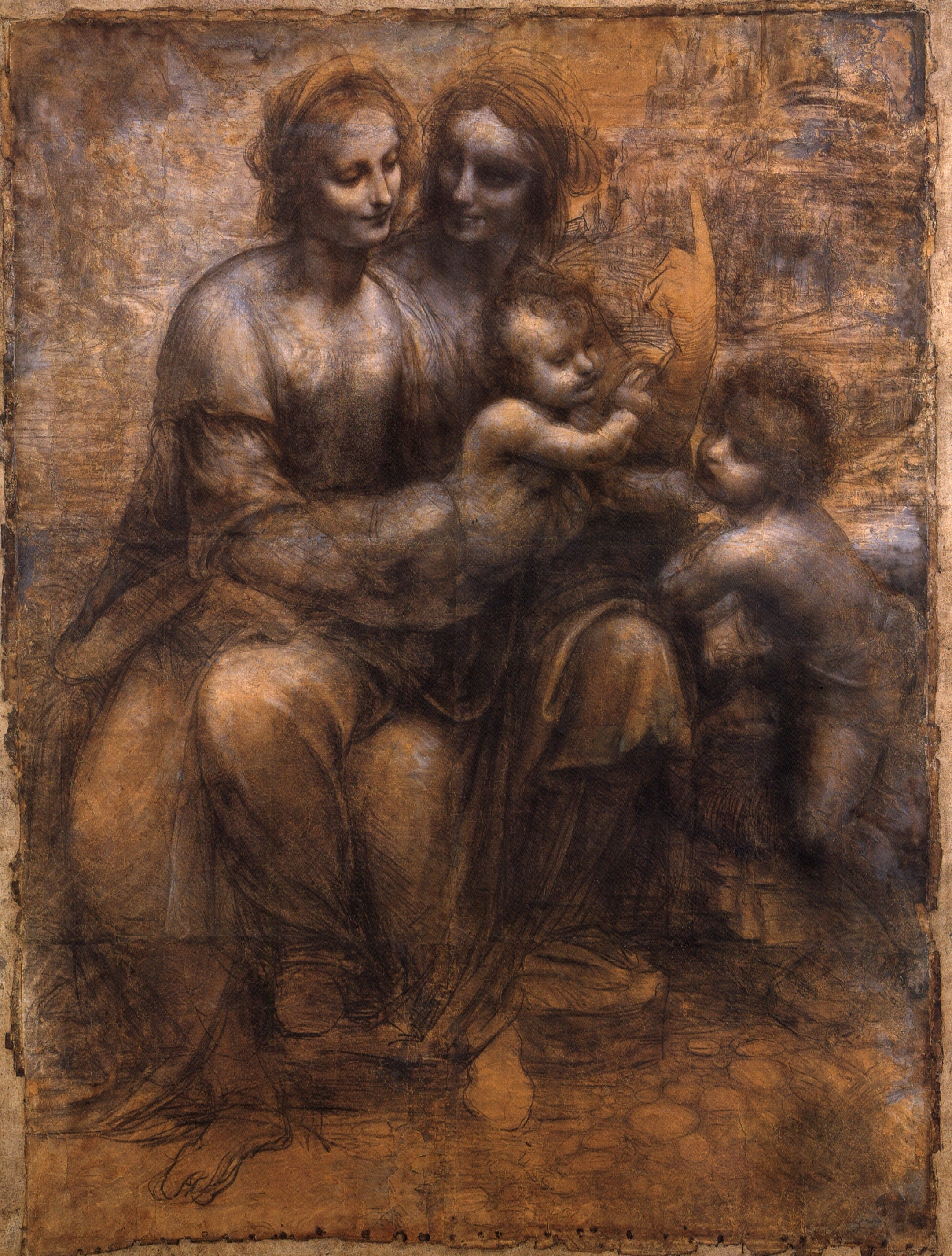- The Virgin and Child with St Anne and St John the Baptist
Infobox Painting|

title=The Virgin and Child with St Anne
and St John the Baptist
artist=Leonardo da Vinci
year=c.1499 –1500
type=charcoal , black and whitechalk on tinted paper
height=141.5
width=104.6
city=London
museum=National Gallery"The Virgin and Child with St Anne and St John the Baptist", sometimes called "The Burlington House Cartoon", is a full-size
cartoon byLeonardo da Vinci . It is a combination of two themes popular in Florentine painting of the15th century : the Virgin (Mary) and Child with St John the Baptist (son of Mary's relative Elizabeth) and the Virgin and Child with St Anne (Mary's mother). It currently hangs in the National Gallery inLondon .There is a subtle interplay between the gazes of the four figures, with St Anne smiling at her daughter Mary, while Mary's eyes are fixed on her son, as are St John's. There is little in the way of clear delineation between the four bodies; the heads of the two women, in particular, look like growths on the same body. St Anne's enigmatic gesture of pointing her index finger towards the heavens recurs in two of Leonardo's last paintings, his "St John the Baptist" and his "Bacchus", and is regarded as the quintessential Leonardesque gesture.
The drawing, in
charcoal and black and whitechalk , covers eight sheets of paper glued together. Unusual for a cartoon, the outlines have never been pricked or incised, indicating that the stage of transferring the design to the panel that would then be painted was not reached. The composition is markedly different from Leonardo's only other surviving treatment of the subject, "The Virgin and Child with St. Anne " in theLouvre , in which the figure of the Baptist has been eschewed.The work's alternative title, "The
Burlington House Cartoon", refers to its home at theRoyal Academy until 1962, when it was put on sale for £800,000. Amid fears that it would find an overseas buyer, the cartoon was put on show in the National Gallery where it was seen by over a quarter of a million people in a little over four months, many of whom made donations in order to keep it in theUnited Kingdom . The price was eventually met, thanks in part to contributions from theNational Art Collections Fund . Ten years after its acquisition,John Berger derisively wrote in his book "Ways of Seeing " that "It has acquired a new kind of impressiveness. Not because of what it shows – not because of the meaning of its image. It has become impressive, mysterious because of its market value". In1987 , it was attacked in an act of vandalism with a sawn-off shotgun. The blast caused significant damage despite not fully penetrating the canvas after shattering the glass covering, but it has since been restored.References
*Langmuir, Erika (2004). "The National Gallery Companion Guide". London: National Gallery Company.
*Potterton, Homan (1977). "The National Gallery, London". London: Thames & Hudson.
*Verdi, Richard (ed.) (2003). "Saved! 100 years of the National Art Collections Fund". London: Scala.External links
* [http://altreligion.about.com/library/texts/bl_differentdvc.htm A Different Da Vinci Code] The missing pieces of Leonardo's puzzle point to plain and simple Hermeticism (detailed analysis of Leonardo's Burlington House cartoon).
* [http://www.nationalgallery.org.uk/cgi-bin/WebObjects.dll/CollectionPublisher.woa/wa/work?workNumber=ng6337 Page on the cartoon from the National Gallery's official website]
Wikimedia Foundation. 2010.
